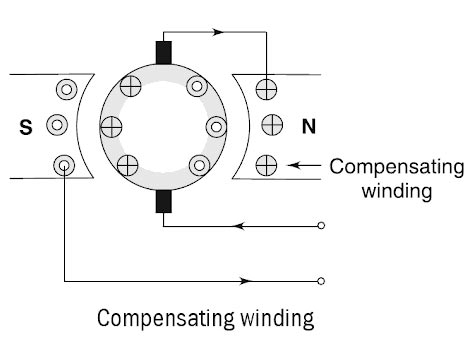In very large d.c. motors with severe heavy-duty, armature reaction effects are corrected by
In very large d.c. motors with severe heavy-duty, armature reaction effects are corrected by
Right Answer is:
Using compensating winding in addition to interpoles
SOLUTION
- The usse of interpoles does eliminate the effect of cross-magnetizing effect but it still does not remove the effect of the flux weakening problem of the DC machine.
- Moreover, interpoles are effective only in the commutating zone, which means that the armature reaction effect is removed only under the interpoles while another periphery of the armature is not affected. This is a very serious problem with large machines.
- Some large d.c. motors employed in steel mills perform a series of heavy-duty operations. They accelerate, decelerate, stop, reverse all in a matter of seconds. The corresponding armature current increases, decreases, reverses in the stepwise fashion, producing very sudden changes in armature reaction. For such motors, interpoles do not adequately neutralize the armature m.m.f.
- To eliminate this problem, additional compensating windings are connected in series with the armature.
- In this method, a winding called, compensating winding, is placed in the carved-in faces of the main poles to cancel the effect of the armature reaction and to maintain uniform flux distribution under the main poles.
- Compensating winding is connected in series with the armature winding in such a way that the current flowing in them is directly opposite to the current flowing in the armature located just below the pole faces. Half of the conductors (say the left-hand side of the pole) is connected in series with the other half of the conductors (on the right side of the adjacent pole). The compensating winding is shown in Fig.

- The mmf produced by the compensating winding is equal and opposite to the mmf produced by the armature at every point under the pole faces. Hence the net mmf is just equal to the mmf produced by the main poles alone. As a result, the flux in the machine remains unchanged regardless of the load on the machine.
